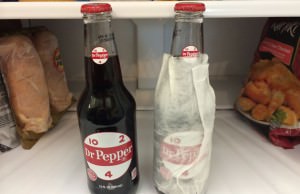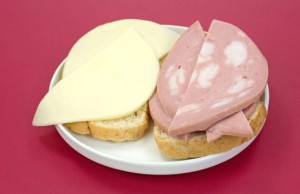21 Foods People With Gout Should Avoid

Gout is a terrible condition that often results in very painful arthritis. If you have it, then you know how bothersome it can be. However, you probably didn’t know that there are ways to use your diet to limit your gout-related problems. Here are some foods that you should definitely avoid if you suffer from gout.
1. SCALLOPS
Seafood, especially shellfish, is particularly bad for people with gout, but scallops seem to be the worst, according to many experienced gout sufferers. This delicious mollusk, which is best served seared and still hot with some lemon and veggies, is something you definitely need to forgo if you have gout or have a predisposition to suffer from it.
Like other foods that are bad for gout, scallops have a high content of purine, a substance that the human body converts to uric acid. Uric acid is the single most responsible factor in developing gout and it’s what makes this conditions so painful. Scallops are best if avoided altogether but it doesn’t mean you still can’t treat yourself every once in a while with this seafood delicacy. Just make sure not to overdo it. Experts say that six to eight ounces of shellfish per day is the absolute maximum you should allow yourself.

2. BEER
When it comes to gout, doctors usually strongly advise against the consumption of alcohol. However, some alcoholic beverages seem to cause particularly severe gout flare-ups, more so than the others.
Beer is one of those beverages, unfortunately. If you have gout, do yourself a favor and say no to the cold, sweaty bottle of the hoppy goodness on a hot summer evening or after a long day at the office, and opt for a different beverage instead.
During a gout flare, most doctors recommend steering clear from alcohol altogether. But if you really have to drink, go for wine or something else instead. Basically anything but beer. This is because beer does not only increase your uric acid levels, it also makes it very difficult for your body to process and eliminate the dreadful acid. To put it simply, when you drink beer, it will take much longer for your gout symptoms to calm down and go away.

3. COFFEE
Coffee, tea, caffeinated sodas and other beverages containing caffeine are a major no-no for people who have gout. Coffee has the highest caffeine content of them all, which makes it the worst choice in case of gout. Basically, the more caffeine there is in a beverage, the worse your symptoms will be.
Coffee is a pretty potent diuretic, which means it expels water from your body. This is particularly unfortunate for those who suffer from gout, and here’s why: the crystals of uric acid, which is responsible for gout, are normally suspended in blood.
When the body loses a lot of water, the uric acid crystallizes in the joints, causing excruciatingly painful gout flare-ups. However, don’t panic just yet. You can still have your precious cup of joe, just make sure you stop at one cup per day. Anything more than that and you’ll be at risk of dehydration and hence a gout flare-up.

4. TURKEY
Some people noticed that their gout gets worse around holidays, especially Thanksgiving and Christmas. Eating too much, indulging in alcohol, desserts and other not so healthy foods is probably one of the main reasons for this, but you may be surprised to learn that the biggest cause of holiday-related gout attacks is actually everyone’s favorite bird – turkey.
Turkey meat has a very high content of purine, a substance directly linked with gout. In fact, turkey and goose have the highest purine content of all foods, and since goose is not exactly the most popular meat, poor turkey will have to bear alone the reputation of the worst possible food for gout.
People who suffer from this painful inflammatory joint disease are strongly advised to stay away from turkey, even during holidays. No roast, no turkey sandwiches, nothing. Unless, of course, you want to spend the rest of the holiday in excruciating pain.

5. HERRING
Herring is not exactly everyone’s favorite food, but those who do like this salty, smelly fish will be sad to learn that it’s actually very bad for gout. As we mentioned earlier, seafood in general is bad for gout, whether we’re talking about fish, crustaceans or mollusks. When it comes to fish, experts believe that herring is the worst, and here’s why.
Like many other oily types of fish, for example mackerel and sardines, even tuna, herring is very rich in purines. By now we already know very well that purines are what’s causing gout flare-ups and that they need to be avoided at all costs, since that’s the only way to keep the symptoms of gout at bay. Most experts agree that it’s best to avoid herring altogether. If you can’t live without seafood, opt for crab, lobster, eel and shrimp instead, but only occasionally, not on regular basis and not in large amounts.

6. LIVER AND GIBLETS
Organ meats are a bit of an acquired taste but if you suffer from gout and love eating liver, giblets, sweetbreads and other organ meats, well, we have some bad news for you.
While they are good sources of some important nutrients, especially iron, magnesium and potassium, as well as vitamins, organ meats are extremely rich in purines. Purines, as we already mentioned, are the number one culprit when it comes to gout, as they increase the uric acid levels in the body and cause gout flare ups.
It is highly recommended to stay away from liver and giblets if you want to prevent a gout attack. If you really can’t help yourself around a steaming plate of yummy liver, make sure to eat in moderation and to limit the consumption of this meat to once in a month, or even less. And remember that this doesn’t only apply to liver – heart, spleen and other animal organs are also high in purines.

7. SODAS
Sodas and other sugary beverages, carbonated or not, are generally bad for everyone. They have little to no nutritional value and they are considered to promote and accelerate the onset of many serious diseases and medical conditions, gout included.
The ingredient that makes sodas particularly bad for gout sufferers is the high-fructose corn syrup, found in almost all sodas, especially colas. The sweeteners in sodas, especially the high-fructose syrup mentioned above, actually cause the body to produce more uric acid. High levels of uric acid lead directly to gout attacks in persons already suffering from this disease.
Furthermore, a study showed that people who drank a lot of soda ended up with gout later in life, regardless of age and sex, which means that sugary beverages are one of the direct causes of this painful condition. If you can’t say no to sodas altogether, at least try switching to diet ones, which, although they’re also unhealthy, are less likely to cause gout.

8. ASPARAGUS
Asparagus is a weird vegetable that is not among the world’s most beloved foods, but if you are one those people who just love a nice creamy asparagus soup or some yummy baked and buttered asparagus stems, you have to keep in mind that this veggie is associated with more severe and more frequent gout flare ups in sufferers.
Vegetables are generally good for gout but some veggies have a higher content of purines than the others. Asparagus is the vegetable with the highest purine content and, as such, its consumption should be limited. This doesn’t mean you have to give up asparagus altogether – just don’t eat too much of it and don’t eat it too often. A little bit of asparagus as a side dish every now and then won’t make too much of a difference when it comes to gout. The same goes for cauliflower and spinach.

9. CAVIAR
Most people go through their entire life without ever eating one single bite of caviar. On the other hand, those who can afford this delicacy actually eat it quite frequently.
Caviar is deemed either delicious or disgusting – it’s a matter of taste. But there’s no denying that it represents a certain lifestyle, a glamorous, cosmopolitan and affluent one, and that’s what makes people so drawn to it. However, if you like caviar and have the means to eat it often, you should know that these tiny fish eggs are actually bad for gout.
Caviar is yet another food with a high content of purines. In fact, it has quite a lot of them – more than some kinds of red meat, beef and veal included. Caviar contains almost twice as much purines as the same amount of beef. Of course, no one eats that much caviar but still it’s worth remembering that this ritzy food might make your gout worse.

10. RICH SAUCES
Sauces are an essential part of almost every cuisine. They make a dish taste and look better and they can improve even the lousiest, driest piece of meat.
However, depending on their ingredients, sauces can be very bad for gout. Rich sauces are the worst, which kind of makes sense if you think that gout was once called a “rich man’s disease.” So what is it that makes sauces so bad for gout?
Unless it’s a nice, healthy tomato sauce made with delicious tomatoes and some olive oil, sauces in general are quite fatty. Increased fat intake is closely related to gout flare ups so people suffering from gout usually try to limit their consumption of fatty foods. Sauces can be tricky because fats in them are not quite so obvious. Another reason why rich sauces are bad is that they usually come with meat, most of which has a very high content of purines.

11. DUCK
Duck meat is considered a great delicacy, partly because it is not among the most commonly consumed meats, but also because it’s simply delicious. The Peking Duck is a mainstay of Chinese cuisine and something everyone should try at least once in their life, except if they suffer from gout.
Gout is tricky because there’s no way of knowing when a flare up will strike, and how intense it will be. However, there are certain things you can do to reduce the risk of a gout attack, and avoiding duck meat is definitely one of them.
This delicious meat has a very high content of purines, which makes it a no-no when it comes to gout sufferers’ diet. Since duck is not the most common meat in Western cultures, avoiding it shouldn’t be that big of an issue. However, it’s worth remembering to stay away from Peking Duck the next time you have a fancy dinner in a nice, traditional Chinese restaurant.

12. HAM
Ham is a highly popular and beloved food and learning that people with gout should avoid it must be pretty painful, but that’s the way it is. Ham is not among the foods with the highest ever content of purines, but it does contain a sizable amount of these substances, meaning its consumption should be limited.
It’s hard to imagine a holiday dinner without a nice, big, yummy ham. A little slice of it every now and then, in a sandwich or with a salad, won’t make your gout intolerable as long as you keep it light and occasional. Too much ham too frequently, on the other hand, can lead to more intense and more frequent gout flare ups, so cutting down on it would definitely be the best idea. After all, ham is red meat and all red meats should be avoided by those suffering from gout.

13. MUSHROOMS
People who suffer from gout are advised to avoid most kinds of meat since they have a high content of purines. Because of this, people look for alternative sources of protein and meat substitutes, and mushrooms usually come up as an alternative. This, however, is not a good idea because mushrooms too have been linked with increased gout flare ups.
Most kinds of mushrooms have moderate to high content of purines. By now we all know that lots of purines means a bigger chance of getting a nasty gout flare up. Therefore, mushrooms are not just a bad idea as a meat substitute, but they should be avoided altogether.
Of course, since the purine content in mushrooms is not extremely high, you can still indulge in some delicious porcini, Portobello and shiitake every now and then, as a discreet addition to your risottos, pastas and sauces. Just don’t overdo it, and you’ll be fine.

14. CHICKEN
Red meat is not the only kind of meat that is considered a no-no for people with gout. Unfortunately, the world’s most popular kind of meat – chicken – is also on the list. Chicken is so present in almost all cultures and cuisines, it’s almost impossible to avoid it. But if your gout attacks are particularly rough on you, you’ll have to muster the strength to say no to Buffalo wings, chicken parm, drumsticks and nuggets.
Chicken contains more purines than beef, but less than some kinds of fish. This basically puts it somewhere in the middle of the high purine food spectrum. So what does it mean for you? It means you have to cut down on chicken. It is believed that most American families eat chicken at least four or five times per week. Cut this down to once or twice tops, and reduce the portion size. This way you’ll probably be fine.

15. FRIED FOODS
Fried foods are never really a good idea, regardless of your overall health. Too much fried stuff will eventually make you sick of you are healthy, and if you’re already sick it’ll make you sicker. Simple as that. Gout is no exception, and this time it’s not about the purines.
Fried foods have been directly linked to obesity. Obesity, on the other hand, has been linked with an increased chance of gout, as well as with worsening of the symptoms in people already suffering from gout. To put it simple, if you are obese, you have a better chance of getting painful gout flare ups.
Fried foods don’t just increase the intensity and the frequency of gout attacks – they also put you at risk of chronic gout. And if the foods that are fried are already high in purines, the chance of getting a really bad gout attack is that much higher.

16. SARDINES
As we mentioned earlier, seafood in general has a high content of purines and is therefore not recommended for people who suffer from gout. However, not all seafood is the same and not even all the fish is the same. Some kinds of fish are okay if you have gout, some kinds are okay only occasionally and some kinds are best if avoided completely. Sardines fall in the last category.
Sardines are not everyone’s favorite food. They are very salty, very fishy-smelling and they’re also oily. They are, however, very good for the overall health (provided you don’t suffer from gout) because of their high content of Omega-3 fatty acids and many different vitamins and minerals. Sardines also contain a lot of purines, more than most meats, actually. Purines increase the chance of getting a gout flare up, so, logically, a person suffering from chronic gout should probably avoid sardines completely.

17. SUNFLOWER SEEDS
Sunflower seeds make a great snack. They keep you busy, they are full of vitamins and minerals, as well as beneficial oils, and they are really cheap. However, there is one problem with sunflower seeds – they contain a sizable amount of purines.
Sunflower seeds don’t have as much purines as, say, sardines and turkey, but they still fall into the category of high purine foods. If you only ate sunflower seeds and avoided other purine-rich foods religiously, you’d probably be okay.
However, this is rarely the case because purines are found in many kinds of food and these delicious, salty seeds still add to the cumulative total of these gout-inducing substances. If you suffer from gout and are looking for ways to ward off those horrible, painful attacks, you should probably avoid sunflower seeds and opt for a different kind of snack, such as nuts, pumpkin seeds, dried fruit and chopped veggies.

18. LENTILS
Lentils are very healthy, with their high protein content and plenty of vitamins and minerals. They are also very easy to cook and can be very delicious. But if you are looking for a way to reduce the intensity and frequency of your gout flare ups, lentils are not the best choice for you.
The reason why lentils are bad for people who suffer from gout is the same as for the most other foods on this list – they have a high content of purines, which increase the presence of uric acid crystals in the joints and cause painful inflammation.
Like many vegetable sources, lentils fall into the mid-range category when it comes to purine content, which means you can eat them occasionally, especially if you have cut out some high-purine meats and are looking for an alternative source of protein. Just don’t eat them too much and too often.

By FotoosVanRobin CC BY-SA 2.0 via Wikimedia Commons
19. VENISON
Wild game meat was once a rarity, usually found on tables in families with hunters, since it was among the most expensive kinds of meat. Today, you can find venison in many supermarkets and butcher shops, and the prices are way more affordable.
Venison is highly appreciated, since the animals live free and are not filled with hormones and antibiotics, so most people wouldn’t miss a chance to try a nice deer stew or a similar dish. However, people who have gout should think twice before doing it, because venison actually has a rather high content of purines.
Venison does not have the purine content as high as, say, shellfish or turkey, but it’s still pretty high up on the list of purine sources. Furthermore, it has a high protein content, which is also not the best news for people who have gout, as too much protein seems to aggravate the symptoms of this condition.

20. LOBSTER
Lobster is one of the favorite “fancy” foods out there. Is there a better way to celebrate a joyous occasion than a nice lobster dinner? Lobster is not cheap so people don’t eat it that often, but even so, it’s worth noting that these crustaceans come with an increase risk of a gout flare up.
Because of its price, lobster is probably the least consumed kind of shellfish, which should make it easier to avoid it. Like other shellfish, it has a very high content of purines and should be avoided by people on special gout diets.
Lobster should especially be avoided if your diet already contains a lot of foods rich in purines, such as seafood and most kinds of meat. However, if you really, really want to eat some lobster for a special occasion, you can still do it, as long as you cut down the consumption of other purine-rich foods almost to zero.

21. RAISINS
Raisins are probably the most unexpected source of purines. The tiny, delicious dried grapes are tricky when it comes to gout because we usually only think of meat and seafood when considering a specialized gout diet.
However, purines can be found in other kinds of food, as we saw from this list, which included mushrooms, asparagus and lentils, for example. Raisins can be found in many baked goods and deserts, so paying attention to the ingredients of everything you eat is highly recommended.
Raisins, of course, don’t contain as much purines as some other sources on this list, but they still do have a pretty sizable amount of these gout-inducing substances. A raisin bran cookie or two every now and then won’t cause an intolerable gout flare up, naturally, but a handful of raisins most likely will. So keep these little fellas in mind when planning your gout-preventing diet.









